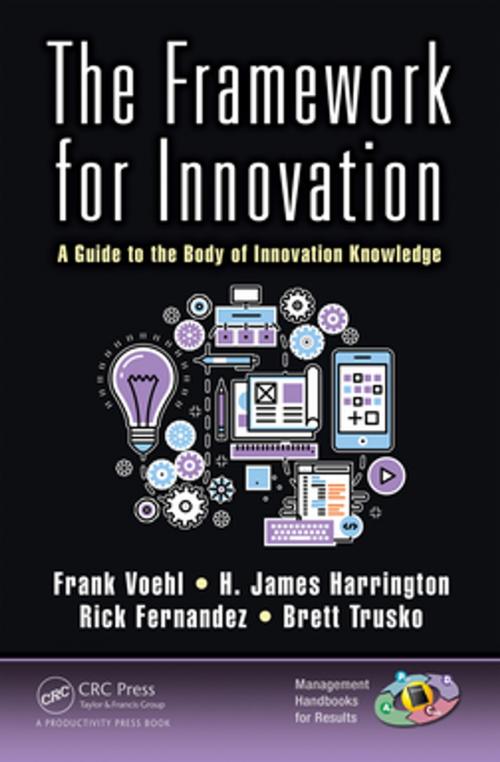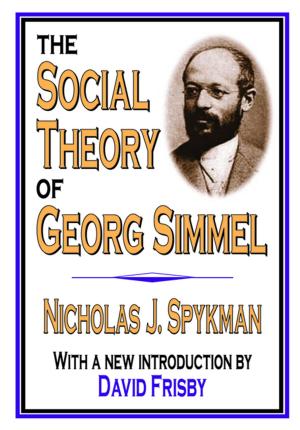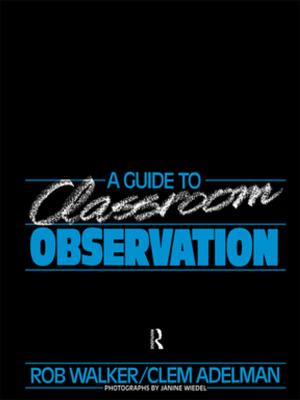The Framework for Innovation
A Guide to the Body of Innovation Knowledge
Business & Finance, Industries & Professions, Quality Control, Management & Leadership, Management| Author: | Frank Voehl, H. James Harrington, Rick Fernandez, Brett Trusko | ISBN: | 9781351645287 |
| Publisher: | Taylor and Francis | Publication: | December 14, 2018 |
| Imprint: | Productivity Press | Language: | English |
| Author: | Frank Voehl, H. James Harrington, Rick Fernandez, Brett Trusko |
| ISBN: | 9781351645287 |
| Publisher: | Taylor and Francis |
| Publication: | December 14, 2018 |
| Imprint: | Productivity Press |
| Language: | English |
The innovation infrastructure and master plan described in this book offers a detailed and comprehensive approach to one of the most difficult and challenging problems facing entrepreneurs involved in innovation at any scale enterprise: the problem of how to govern your organization’s innovation initiatives in the middle of turbulent change. Progress in any field requires the development of a framework, a structure that organizes the accumulating knowledge, enables people to master it, and unifies the key discoveries into a set of principles that
makes them understandable and actionable.
For starters, successful innovation requires an integrated design process, beginning with integration in the design of the enterprise, the design of the product, along with the design and implementation of new technologies. Such an integrated design effort requires good collaboration and management of the design framework, and should be supported by efficient knowledge management techniques and tools; If innovation is to help a business grow and improve its competitiveness, it is also important to plan the innovation carefully.
This book provides a holistic, multidisciplinary framework that will enable your organization and its leaders to take a strategic approach to innovation. The framework combines non-traditional,
creative approaches to business innovation with conventional strategy development models. The framework model brings together perspectives from many complementary disciplines: the non-traditional approaches to innovation found in the business creativity movement; multiple-source strategy consulting; the new product development perspective of many leading industrial design firms; qualitative consumer/customer research; future-based research found in think tanks and traditional scenario planning; and organizational development (OD) practices that examine the effectiveness of an organization’s culture, processes, and structure.
Though some ideas may just "fall from the sky" or "come out of the blue", an organization should also have a strategic vision of how the business and the enterprise will successfully develop. It should not just wait for the innovation to arrive arbitrarily, but rather proactively plan for innovation incorporating market trends, the competitive landscape, new technology availability, and changes in customer preferences and trends in order to create a flexible in-house innovation process. Such an enterprise will also pro-actively manage the knowledge supply chain that supports innovation, as outlined in this book #7 of Management Handbook for Results series.
The framework outlined in this handbook consists of a well-integrated cohesive set of practices that inspires imaginative innovation teams to look beyond the obvious and explore a broad range of possibilities to identify significant opportunities and make informed decisions about the most promising paths to pursue. The goal is to create a shared vision for growth, along with defining pragmatic action plans that bridge from the future back to the present, while attempting to align the organization around the requirements for success.
The innovation infrastructure and master plan described in this book offers a detailed and comprehensive approach to one of the most difficult and challenging problems facing entrepreneurs involved in innovation at any scale enterprise: the problem of how to govern your organization’s innovation initiatives in the middle of turbulent change. Progress in any field requires the development of a framework, a structure that organizes the accumulating knowledge, enables people to master it, and unifies the key discoveries into a set of principles that
makes them understandable and actionable.
For starters, successful innovation requires an integrated design process, beginning with integration in the design of the enterprise, the design of the product, along with the design and implementation of new technologies. Such an integrated design effort requires good collaboration and management of the design framework, and should be supported by efficient knowledge management techniques and tools; If innovation is to help a business grow and improve its competitiveness, it is also important to plan the innovation carefully.
This book provides a holistic, multidisciplinary framework that will enable your organization and its leaders to take a strategic approach to innovation. The framework combines non-traditional,
creative approaches to business innovation with conventional strategy development models. The framework model brings together perspectives from many complementary disciplines: the non-traditional approaches to innovation found in the business creativity movement; multiple-source strategy consulting; the new product development perspective of many leading industrial design firms; qualitative consumer/customer research; future-based research found in think tanks and traditional scenario planning; and organizational development (OD) practices that examine the effectiveness of an organization’s culture, processes, and structure.
Though some ideas may just "fall from the sky" or "come out of the blue", an organization should also have a strategic vision of how the business and the enterprise will successfully develop. It should not just wait for the innovation to arrive arbitrarily, but rather proactively plan for innovation incorporating market trends, the competitive landscape, new technology availability, and changes in customer preferences and trends in order to create a flexible in-house innovation process. Such an enterprise will also pro-actively manage the knowledge supply chain that supports innovation, as outlined in this book #7 of Management Handbook for Results series.
The framework outlined in this handbook consists of a well-integrated cohesive set of practices that inspires imaginative innovation teams to look beyond the obvious and explore a broad range of possibilities to identify significant opportunities and make informed decisions about the most promising paths to pursue. The goal is to create a shared vision for growth, along with defining pragmatic action plans that bridge from the future back to the present, while attempting to align the organization around the requirements for success.















